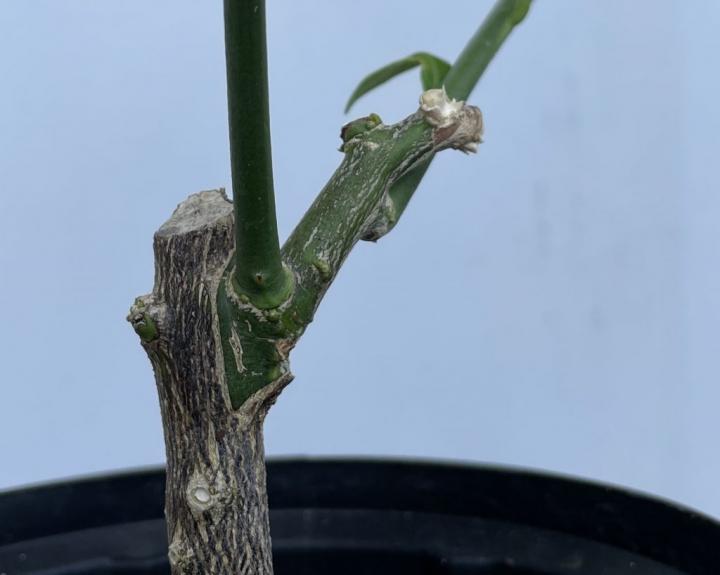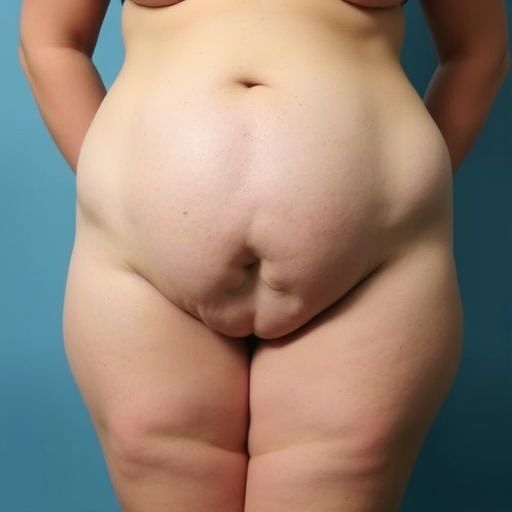UConn researcher Yi Li has invented a novel grafting technique that improves several factors important for healthy plant growth

Credit: Yi Li
With all the trees, flowers, and other fauna around us, it may seem like plants spring up effortlessly. In reality, farmers often engage various intentional, technical methods to produce the best plants possible.
One such strategy is known as grafting, where the bottom half of one plant, called the rootstock, is combined with the top half of another plant, known as the scion, to produce a stronger plant overall.
This allows farmers to combine the best of both plants. For example, a plant resistant to a pathogen in the soil can have its rootstock combined with a plant that produces better fruit but doesn’t have this resistance.
UConn has successfully patented a novel grafting innovation that addresses several common problems with this process. Yi Li, professor of plant science in the College of Agriculture, Health, and Natural Resources, and his team developed transgenic rootstock in which he and his team manipulated the levels of two naturally occurring hormones. This patent was granted on May 18.
One problem is that often, the rootstock and scion do not join quickly, causing grafting failure. Increasing auxin levels successfully addresses this concern.
Li used a root-specific gene promoter sequence, known as SbUGT, to control expression of IaaM, an auxin biosynthetic gene, leading to localized increases in auxin levels in rootstock. Auxin is an important hormone that promotes graft union formation and root initiation while suppressing new shoot development.
“This invention helps rootstock and scions join together, faster, easier, and more successfully,” Li says.
Often, new shoots begin to grow out of the rootstock of grafted plants, getting in the way of scion growth. Removing these shoots is a tedious, labor-intensive process.
To further remedy this problem, Li modified the rootstock to suppress the production of cytokine in rootstock, which drives the growth of these undesired shoots. He and his team incorporated CKX, a cytokine degradation gene. Cytokinin is also an important hormone, repressing root initiation and growth but enhancing new shoot development. CKX also promotes root growth.
Li and his team demonstrated the effectiveness of this approach in a set of papers published in 2017 and in April of this year.
A major advantage of Li’s technology is that while the rootstock is transgenic, the scion, and thus any fruits or seeds produced from the plant, are not.
Transgenic plants are those in which scientists insert genes not normally found in that plant. In this case, Li added SbUGT:IaaM and SbUGT:CKX to control levels of naturally occurring plant hormones, auxin and cytokine levels.
Federal agencies institute strict controls over transgenically modified foods, or GMOs, costing farmers who want to grow them a tremendous amount of time and money.
“A lot of people don’t want to use transgenic technology because it takes a long time to be approved and they need to invest a lot of money upfront for it,” Li says. “But you can use our technology to achieve non-transgenic fruits and seeds.”
Even though people have been safely eating GMOs for decades, many consumers are wary of them. By producing non-transgenic fruits and seeds, it can be easier to market them.
In the future, Li hopes to develop this technology with gene editing techniques. Gene editing is different from transgenic modification because it only works on genes already present in the plant rather than introducing foreign genes. This would allow him to completely phase out the transgenic elements of the rootstock.
###
Media Contact
Jessica McBride, PhD
[email protected]
Original Source
https:/




